
Top sights of Lhokha Prefecture, Tibet
To the south of Lhasa, in what is known as the “breadbasket of Tibet”, lies Lhokha Prefecture, Tibet known in Chinese as Shannan. Stretching along the middle and lower region of the Yarlung Zangbo River, and to the south of the Nyenchen Tanglha Mountains, Lhokha is believed to be the birthplace of the Tibetan people. According to legends, the Tibetan people were born of the sacred monkey and the goddess Luocha on Mount Gongburi, in Tsedang. The mountain is now considered to be a sacred place in Tibetan Buddhism. Historical documents and archaeological findings have shown that the ancestors of the Tibetan people lived in this area as long as four million years ago, and a small piece of land near Tsedang town is believed to be the first farmed Tibetan field.
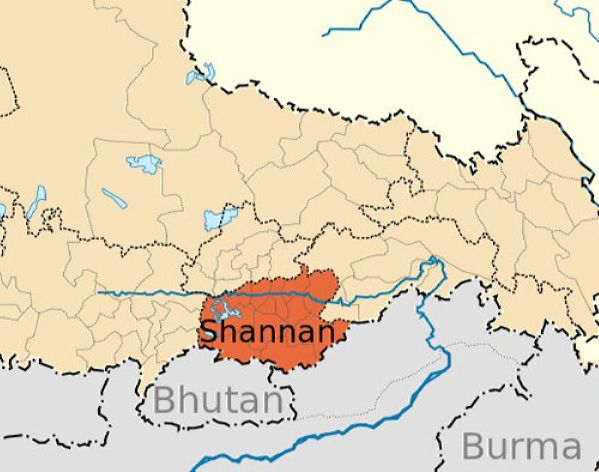
The location of Lhokha Prefecture in Tibet
With a mild climate and abundant sources of water, the area is very suitable for arable farming, animal husbandry, and the most fertile stretches of the land lie alongside the Yarlung Zangbo River. Natural grazing lands spread across Langkazi County and Cuomei County, and the counties of Nongzi, Cuona, Jiacha, and Luoza are filled with lush valleys full of dense forests.
As well as having the longest history of any region of Tibet – it is the place where the first king of Tibet, Nyatri Tsenpo, began his rule over the Yarlung Valley in the second century BC – Lhokha is the most prosperous part of Tibet. The landscape features many lakes, springs, and river valleys that make the land more fertile and well irrigated. Along with the holy Snow Mountains, the sacred lakes, stunning glaciers, historic relics, and simple way of life, the natural sights and culture of Lhokha are well worth a visit.
Table of Contents
Yamdrok Lake
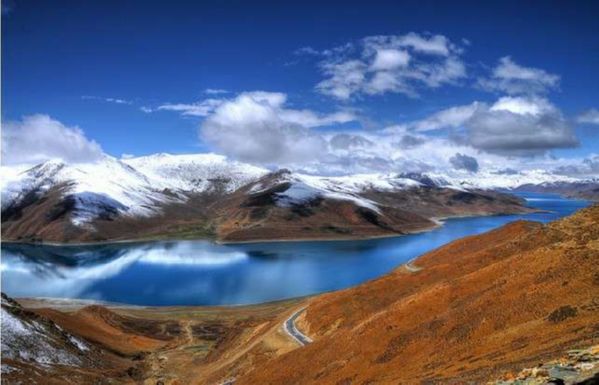
Lake Yamdrok
The stunning and sacred Yamdrok Yumtso Lake lies within Nankartse County in Lhokha Prefecture and is one of the most beautiful high-altitude lakes in the world. A stretched-out shape to the lake, it has many branches that extend from its main body, and is one of the three great sacred lakes of Tibet, along with Lake Namtso and Lake Manasarovar. The lake is over 72 kilometers long and is surrounded by snow-covered mountains; whose spring melts feed the lake through several small streams.
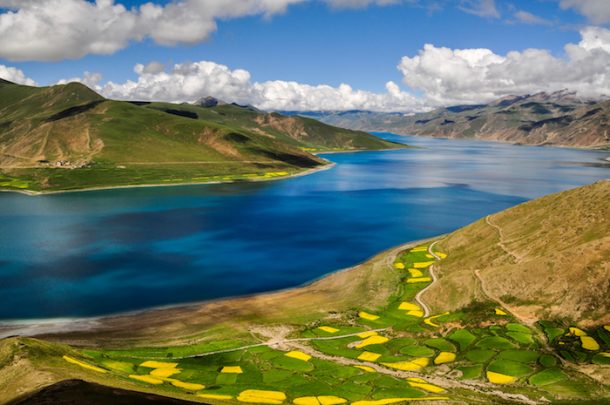
Holy Yamdrok lake from the Kampa la pass
Lake Yamdrok is considered to be sacred by the Tibetan people, and like many mountains and lakes in the region, believed to be the dwelling places of the deities, and said to have special spiritual powers. Yamdrok is believed to be guarded by the goddess Dorje Gegkyi Tso and is said to be the life-spirit of Tibet. The largest lake in southern Tibet, the people believes that if its waters ever dry up Tibet will never again be habitable.
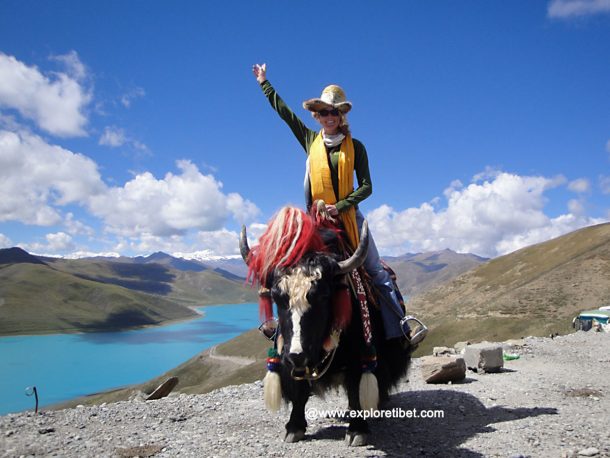
Our clients riding on the Yak at Yamdrok lake
The lake and its surroundings are often closely linked to the Padmasambhava, or the Second Buddha, who brought Buddhism to the region in the 8th century. it is also the site of the famous Samding Monastery, which is the only monastery in Tibet that is presided over by a female abbot. Around thirty nuns and monks reside in the monastery, which lies on a peninsula that juts out into the lake from its southern shore. Tourist and pilgrims can often be seen walking along the edge of the lake, in the ritual kora around its huge perimeter.
Samye Monastery and Yumbulakang Palace
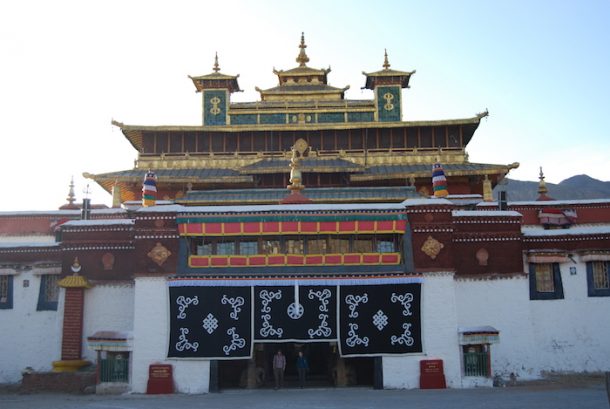
Samye Monastery
Built-in 762 under the great Tibetan King, Trisong Detsen, Samye Monastery is the oldest monastery in Tibet and the first official Buddhist monastery in the region. In its 1,200-year history it has been the single most influential monastery in Tibet, and once played host to the famous “Great Debate” between the Chinese Chan Buddhists and the Indian Mahayanists from 792 to 794.
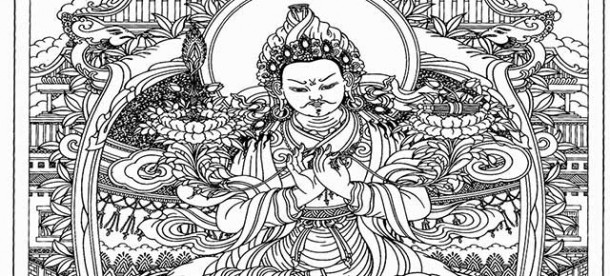
Hand-drawn image of the Tibetan king, Trisong Detsen
The design of the monastery is laid out in the form of a huge, sacred mandala, where the center represents the legendary Mount Meru, the center of the Buddhist universe. It is also a popular destination for Tibetan pilgrims, who travel across the region for many weeks to circumambulate the monastery and pray in the shrines.
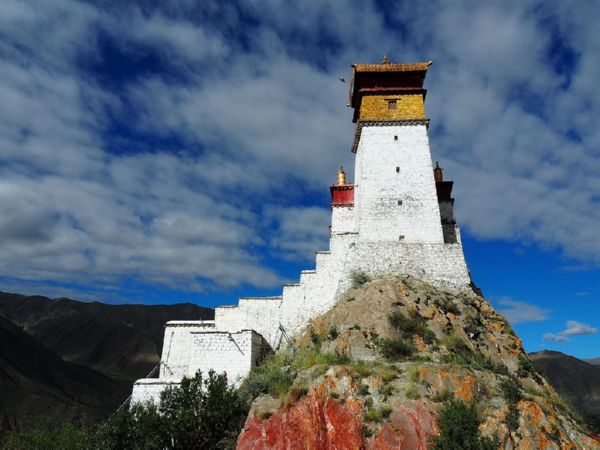
Yumbulakang Palace in Lhokha
In the vicinity of Tsedang, In Nedong County of Lhokha Prefecture lies the ancient structure known as the Yumbulakang Palace. It is believed to have been built by the first Tibetan King, Nyatri Tsenpo, and is said to have been the first Tibetan building. The structure has a long and varied history and has seen the great Tibetan kings, Thothori Nyantsen and Songtsen Gampo residing in its halls. After Songtsen Gampo moved his seat of the rule to Lhasa in the seventh century, the palace became a shrine to Tibetan Buddhism and history.
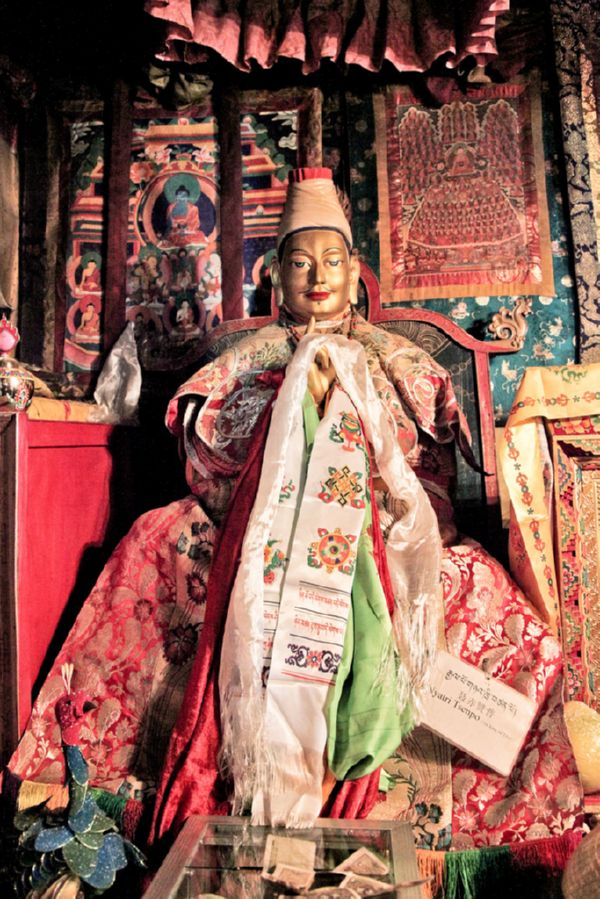
Statue of Tibet’s first king Nyatri Tsenpo in Yumbulakang Palace
More than a thousand years after the reign of Songtsen Gampo, under the leadership of the fifth Dalai Lama, the palace was turned into a monastery of the Gelug School of Tibetan Buddhism, which it remains to this day. Inside the palace stand the statues of Tibet’s famous kings, including the first Tibetan King, Nyatri Tsenpo, the 33rd king of Tibet, Songtsen Gampo, and many other great kings of the Tubo Empire.
Experience the Ongkor Festival
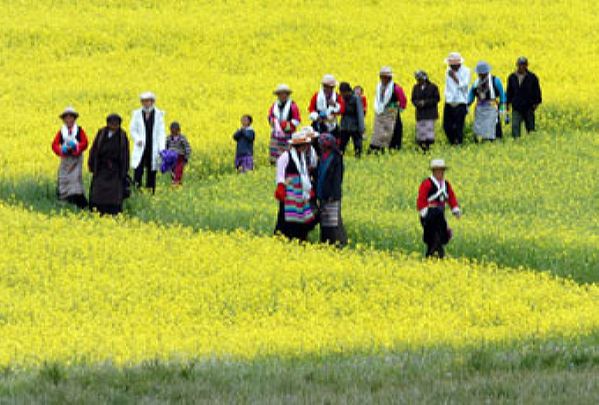
Lhokha Tibetans performing the rituals Ongkor
Originating in the Lhokha Prefecture along the middle and lower reaches of the Yarlung Zangbo River, the Ongkor Festival is the traditional festival of the Tibetan farmers in the region, which has since spread to many of the other farming communities across Tibet. The original ritual was one of offering sacrifices to the deities by the local villagers to pray for a bumper harvest and is still held in the traditional way in the Tsedang area of Lhokha during mid-summer.
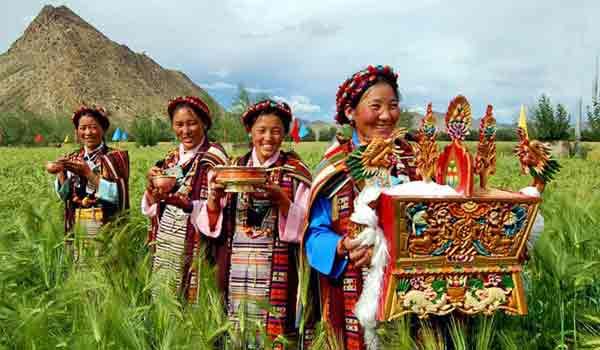
Tibetan women carry a “dou” of grain and the Buddhist scriptures
“Ong” means field in Tibetan, and “kor” means to walk around, thus the Ongkor Festival is the festival of walking around the fields. Every year, the families from the villages in the area send out their female representatives, dressed in their finest robes and wearing their most precious jewels, to make a 100-strong group to walk around the fields. Carrying a scripture book on their backs showing pictures of good harvests and a measure of grain known as a “dou” in their hands, this group of women make a ritual walk, much like a kora, around the fields of the villages to pray for a good harvest to last them through the winter.
The group is led by a revered man of the village, often a local lama and the older villagers stand along the route they will walk burning mulberry branches as a worship to the deities. To the ritual sounds of drums and trumpets, the women shout “Yangguxiu! Yangguxiu!”, which means “Come back, the soul of the earth!”
In modern times, this festival is then finished off with games, horse racing, and other festivities, as the farmers celebrate the forthcoming bumper harvest. A great sight to see for travelers to Tibet, it is a unique insight into the traditions of the Tibetan people.
Recent Posts
The Ultimate Guide to Tibet Tours, Travel, and Trekking Adventures
How to Explore Tibetan Culture
Exploring Lhasa:The Heart of Tibet
All Categories
- About Tibet
- book a Tibet tour
- Buddhism Practice
- Budget Tour
- China-Tibet Train
- Customized Tibet tour
- Historical Sites
- Hot Springs in Tibet
- News
- Photography in Tibet
- Tibet attraction
- Tibet Group Visa
- Tibet Motorcycle Tour
- Tibet Small Group Tours
- Tibet Tours and Tibetan Tour Guide
- Tibet Train
- Tibet Travel FAQs
- Tibet Travel Information
- Tibet Travel News
- Tibet Travel Permit Update
- Tibet Travel Prices Rises
- Tibet Trek
- Tibet Trekking Tour
- Tibet weather and climate
- Tibet Wildlife animals
- Tibet Winter Tour
- Tibetan Buddhism
- Tibetan Cultural Features
- Tibetan Culture and Poeple
- Tibetan Festivals
- What to see in Tibet



